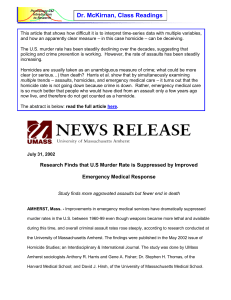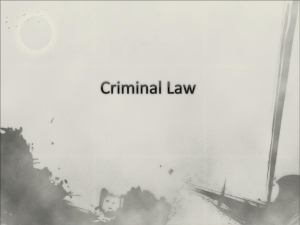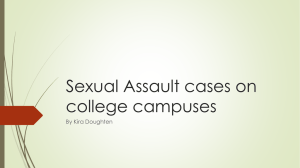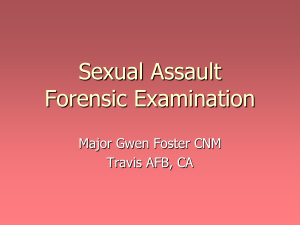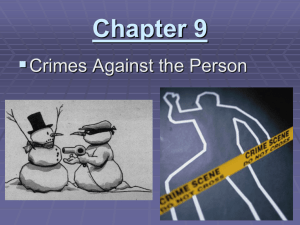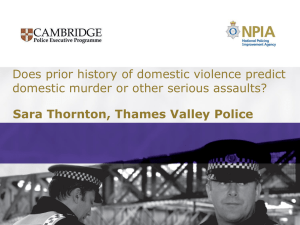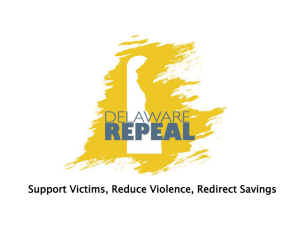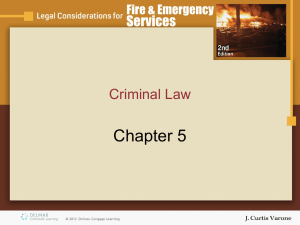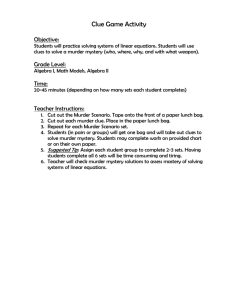Canadian Criminal Code Part I
advertisement
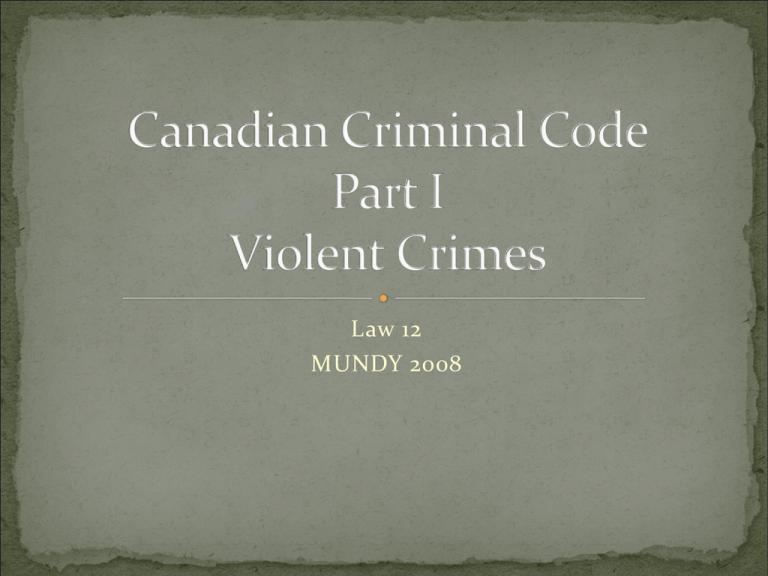
Law 12 MUNDY 2008 Homicide: death of a human being by another wrongfully Murder can be either CULPABLE or NON-CULPABLE NON-CULPABLE murder means the accused is not blameworthy, i.e. – accident or self-defence; NON-CULPABLE MURDER IS NOT AN OFFENCE CULPABLE murder means the accused is blameworthy Murder is subdivided into 6 crimes: 1st degree murder 2nd degree murder Manslaughter Infanticide Attempted murder Accessory to murder Planned and deliberate When the victim is a peace officer (police, etc.) Committed during the commission of a sexual assault, hostage taking or kidnapping Committed during commission of unlawful act using explosives Committed for purpose of organized crime/gang Committed for purpose of terrorism 1st degree murder carries a life-imprisonment sentence with no chance for parole for 25 years Any other intentional murder not defined as 1st degree murder 2nd degree murder carries a life-imprisonment sentence with no chance for parole for 10 years Although not defined in the Canadian Criminal Code, generally understood to be the unlawful killing of a person (due to an unlawful act) without malice, either voluntary or by sudden impulse A person charged with murder may have their charges reduced to manslaughter if they successfully use the defences of intoxication or provocation The killing of a newborn by his or her mother Charge means accused is suffering under effects of depression or mental disturbance from childbirth Maximum sentence is 5 years It is illegal to counsel, advise or assist someone in the commission of suicide Euthanasia, also known as ‘mercy killing’, subcategorized as either voluntary (person with terminal cancer has expressed wish to die) or involuntary (cancer patient in coma) All are considered homicides, although compassion is given to situations involving elderly, disabled spouses Exception is for patients who refuse treatment for an illness Patient in this case must be of “sound mind” In other cases, if patients cannot give directive to refuse treatment, medical professionals or legal guardians make judgement based on medical ethics guidelines Three levels of assault: Assault – 1st level: least severe Assault causing bodily harm – 2nd level: more severe Aggravated assault – 3rd level: most severe Consists of: Applying intentional force to another person, either directly or indirectly, without that person’s consent Attempting or threatening, by act or a gesture, to apply force Approaching or blocking the way of another person, or begging, while openly wearing or carrying a weapon or an imitation of a weapon Does not involve harmful words alone – words must be accompanied by gestures, such as holding up a fist Victim can be unaware of assault – person throws a knife at victim and misses is still assault Assault not considered for persons engaging in consentual sports, such as boxing or wrestling Committed while committing assault when a weapon is carried, used or threatens to use a weapon or an imitation of a weapon Committed also when assault results in bodily harm “Bodily harm” = anything that interferes with the victim’s health or comfort in more than a trifling way Committed when accused maims, wounds, disfigures or endangers the life of the victim Mens rea needed is that accused intended to commit bodily harm, but does not require intent to maim, wound, disfigure or endanger the life of victim Consent tends not to be considered a valid defence in this most severe type of assault

